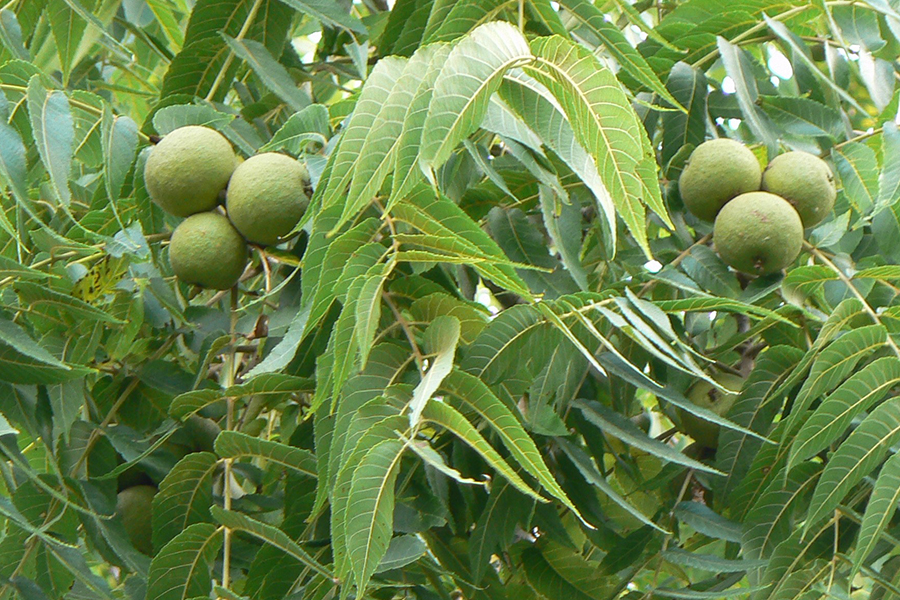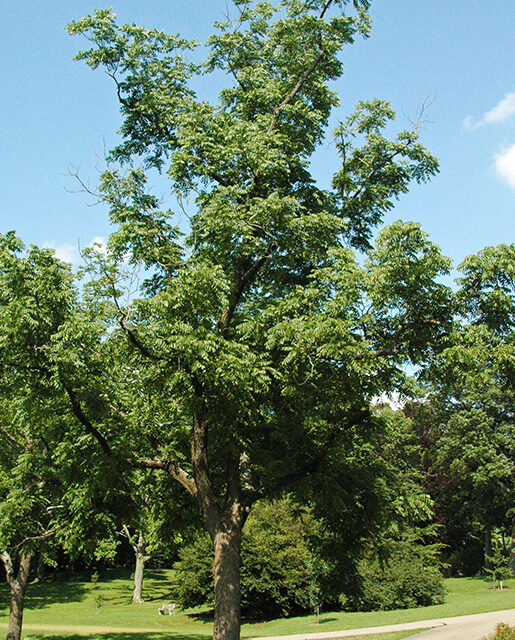Juglans nigra
Black walnut thrives in full sun. That’s why you’ll often find it at the edges of roads, forests, and clearings.
Location
Today, the arboretum hosts over a dozen black walnut trees. Look out from them as you wander from the corner of May and Lovell towards the Lovell Street entrance, and then again as you’re by the Magnolia Trail.


History at Hadwen
The black walnut has been documented in the aboretum since at least 1900, when Hadwen wrote there was a black walnut “from Japan producing fruit in clusters” on his property. He felt that the walnut “makes a fine vigorous tree; tall, with spreading habit; its leaves long, swaying gracefully in the breeze.”
Keep Learning
Detailed Species Information
Black Walnut is a deciduous tree in the family Juglandaceae native to much of central and eastern North America. Black walnut typically reaches 70–80 feet (21–24 meters) in height with a dark gray, furrowed bark forming a diamond-like pattern. The dark green leaves are compound and alternately arranged on the stem. Each leaflet is 2–4 inches (5–10 centimeters) with serrated edges and fuzzy underside. The flowers of the black walnut are hanging, green catkins. In summer and fall, round, hard, green fruits emerge which contain walnuts.
The black walnut is a pioneer species and can often be found in disturbed areas and edges of forests and fields. Although black walnut is considered a shade-intolerant species, it can be found in the understories of forests without the ability to produce nuts. Black walnut is a notable allelopathic tree species meaning it produces and disperses chemicals that hinder the growth of other organisms, particularly other competing plants. The nuts are a valuable source of food for many animals including squirrels, birds, and deer.
The black walnut is widely cultivated for its lumber and nuts. The lumber is highly commercially valuable because of its deep-colored, straight-grained, and workable wood. The nuts are shelled after being collected from wild harvests predominantly in the state of Missouri. Because of its allelopathic characteristics and large fruits, black walnut is not typically used in landscaping but can serve as a suitable shade tree in many cases.
